|
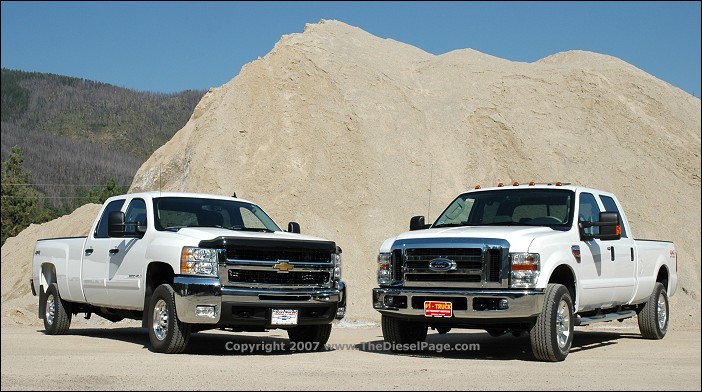 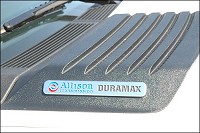
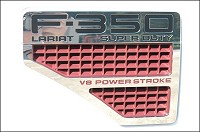 Chevy -Vs- Ford
Chevy -Vs- FordTow testing the new emissions LMM Duramax and 6.4L Power Stroke By Jim Bigley July 2007
A recent pickup truck ad I saw on television said: "Truck guys will tell you taking off with 10,000-lbs ain't no picnic. Stopping 10,000-lbs ain't no picnic either." We agree. Towing tests are few and far between in the automotive media. Most of what we see are dyno results, 1/4-mile elapsed times, and generalized reports about on-road capability. Those types of tests can provide some clue about what we might expect to see while towing a heavy trailer, but they fall short of a real towing evaluation. Part of what most potential GM & Ford buyers really want to know is how the newest diesel pickups stack up against one another in a real-world towing test on a real hill while towing a trailer that weighs at least 10,000-lbs. That's what this test was all about. The diesel pickup manufacturers pay attention to their competition, and work hard to produce a powertrain that competes well in the market - in the areas that matter to truck buyers. From 1999 through 2006, the Duramax owned the towing tests we've conducted. In previous tow tests, the Duramax 6600, the Allison automatic and powertrain management combined to allow the GM trucks to easily power past Ford by a sizable margin. What we learned this year is that there is now a near performance parity between the LMM Duramax & 6.4L Power Stroke. 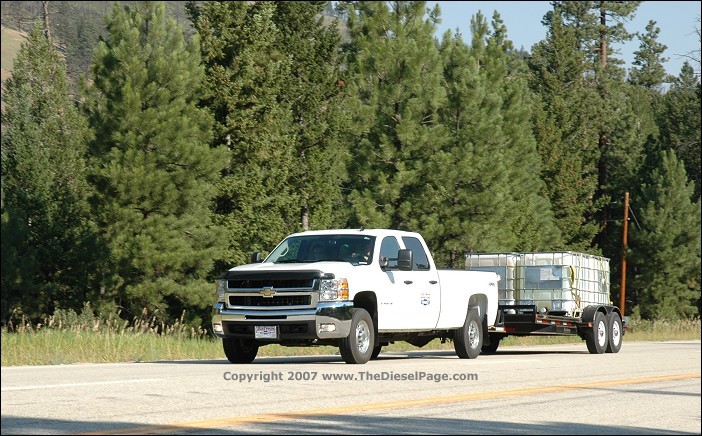 With its odometer displaying 4900 miles, Kevin Tyler, of Karl Tyler Chevrolet, provided the 2007 Duramax LMM 2500HD Chevrolet. This truck is a crew cab longbox equipped with four wheel drive. In addition to this tow test, this was the very same truck we ran on the dyno a month earlier, producing 334 rear wheel horsepower. According to our GPS: from a standing start, the Duramax powered Chevy reached a top speed of 60.6 mph in a measured mile on the 6% grade in 1 minute and 11 seconds. Launch technique may have played a part in the elapsed time. Kevin launched by simultaneously releasing the brake pedal and pushing the go pedal to the mat. Power was high enough to cause the tires to break traction at the 1-2 & 2-3 upshifts. It's worth noting that last year's 2006 LBZ Duramax ran the same hill with the same load, and produced more than 64-mph. While last year's LBZ and this year's LMM are just one example of each, this slightly lower performance could be due to the more restrictive emissions systems. 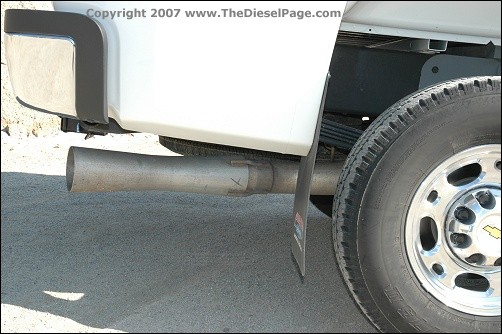
The 2007 Chevy 2500HD was equipped with LT245/75R16 tires, which calculate to 30.47" in diameter. All Duramax powered 2500 series trucks since 2001 got the same size. Most owners feel they need larger tires. The appearance of the air mixing exhaust tip used by GM will likely be improved upon by the aftermarket.
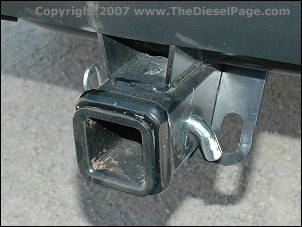
The new GM trucks come with an upgraded 2-1/2" receiver hitch, which is rated to pull 13,000-lbs (with an appropriate weight-distributing hitch). GM includes a hitch adapter with all its new trucks that allows using most existing 2" hitch equipment. Nice touch!
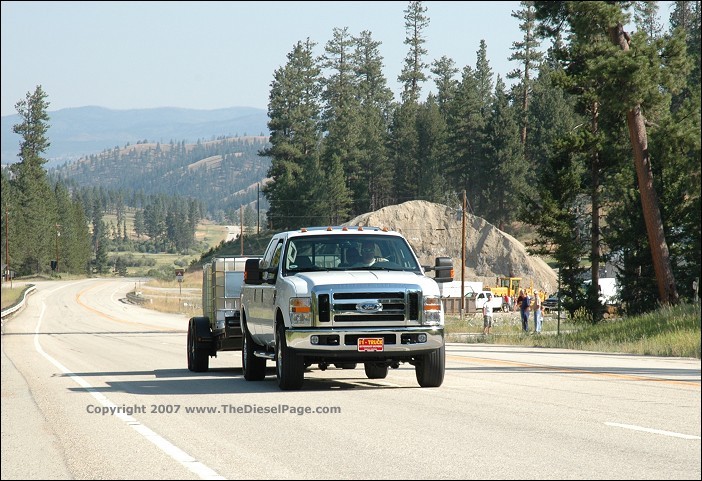 Russ Moody ran his new 2008 6.4L Ford Superduty, which had accumulated 1800 miles before running the hill. Most people would have to agree that the new Superduty has presense. I know some who own the Ford Superduty for only one reason - the look. During USDP's dyno day this past June, the 6.4L PSD spun the horsepower meter to 306 - some 28 less than the LMM Duramax. Knowing this before pulling the hill, I expected the Chevy would handily outrun the Ford. However, the results were a surprise. From a standing start, the 6.4L Powerstroke nearly equaled the Duramax with a speed with 60.2-mph at the mile marker. This is a virtual tie, and certainly within the GPS' margin for error. Also surprising is that the Ford was 6 seconds quicker across the mile at 1 minute and 5 seconds. This may have had something to do with Russ launching from a mild powerbrake. It's worth noting that both trucks were still gaining speed at the mile marker - albeit slowly. The trucks we tested were virtual performance twins. 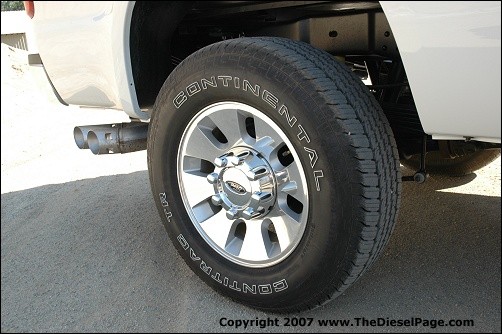
The Ford F350 came factory equipped with LT275/70R18 tires and attractive alloy wheels. According to our tire calculator, this tire is 33.16" in diameter, which is 2.7" taller than the stock GM tires. By now, nearly everyone has seen the flaming Ford video on YouTube, which was due to a problem with a faulty injector and subsequent diesel particulate filter regeneration - in a parking lot. Ford says that can't happen now that the software has been updated. During the time we had the trucks, no one could tell whether either the Duramax or the 6.4L PSD entered into a DPF regeneration. However, soon after pulling the hill, I could feel signficant heat with my hand held at over 5 feet from the twin-tipped exhaust. 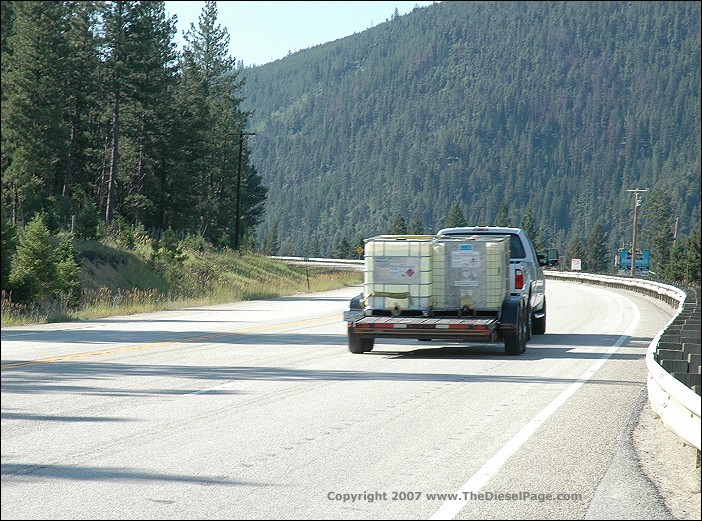 The new trucks don't produce any visible smoke. This shot was taken at about the 1/8-mile point in the run. When combined with ~7,500-lbs of water, the loaded trailer weighed 10,000-lbs. 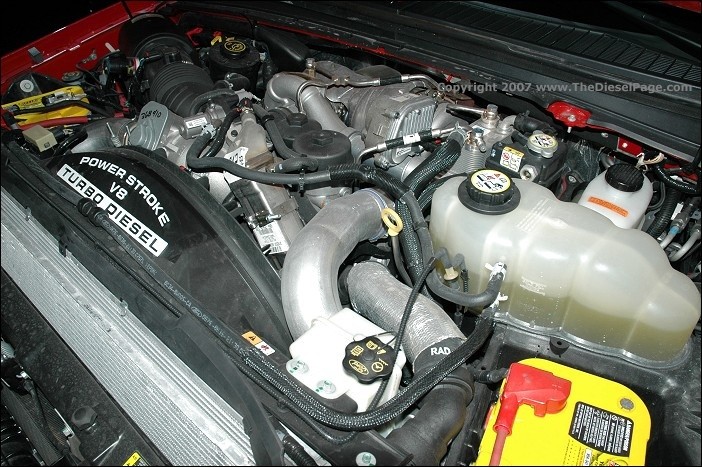 Vehicle owners and mechanics have complained for the past couple of decades about how complicated the new engines were becoming, and the new diesels are no exception. A backyard mechanic will find working on the new Ford to be a challenge for anything other than routine maintenance. 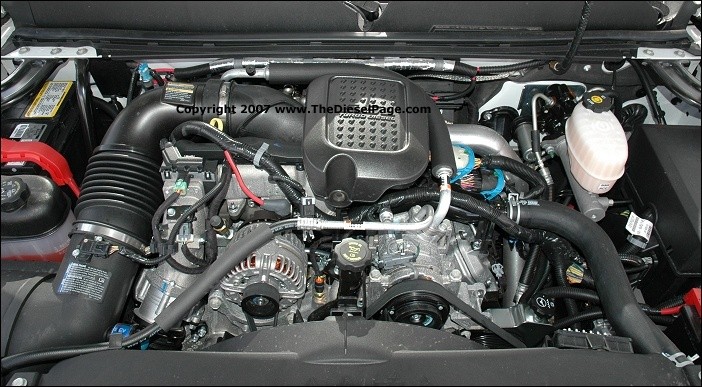 Opening the hood on the new LMM Duramax doesn't quite make your eyes glaze over, but it's still plenty complicated. 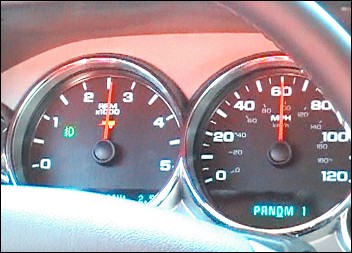 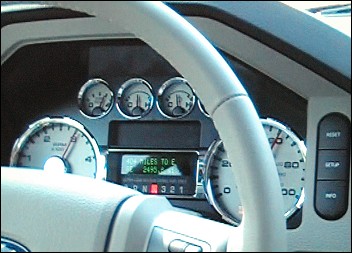 We shot videos of the instrument panels as each truck ran through the mile long pull, and the above stills were taken from the video clips. After riding in both trucks during the pull, I can say that the Chevy was quieter. This may have more to do with each truck's gearing (gear selection) and subsequent engine RPM. You can see in the above images that the Chevy was running at approximately 2550-rpm (on the left) and the Ford was at 3000 when each reached 60-mph. Overdrive was selected in each truck before launching, and the powertrain management and gear selection was left up to the vehicle programming. The final analysis: As mentioned earlier, these two trucks are virtual performance twins. And, the grade-braking each truck employs made descending the hill on the return trip a routine experience. The truck and trailer brakes weren't required to maintain a safe speed on the return trip back down the hill. In the final analysis, the choice for best truck boils down to personal preference - not performance. It looks like we have two winners! TDP
For instrument panel shots, click here to see the new LMM Duramax equipped Chevrolet run the mile (6M download), or click here to see the newest 6.4L Ford Powerstroke run the mile (6M download). A big thanks to Russ Moody and Kevin Tyler, of Karl Tyler Chevrolet, for helping to make this towing test a success! Karl Tyler Chevrolet3219 N Reserve St. Missoula, MT 59801 Call: 1-866-541-2438 www.MontanaChevy.com
What's New: | Feature Articles: | Product Reviews: | Member's Area: Join Us: | Duramax Diesel Page: | Advertisers: | Classified Ads: | Books:
Send e-mail to: turbo@TheDieselPage.com |
